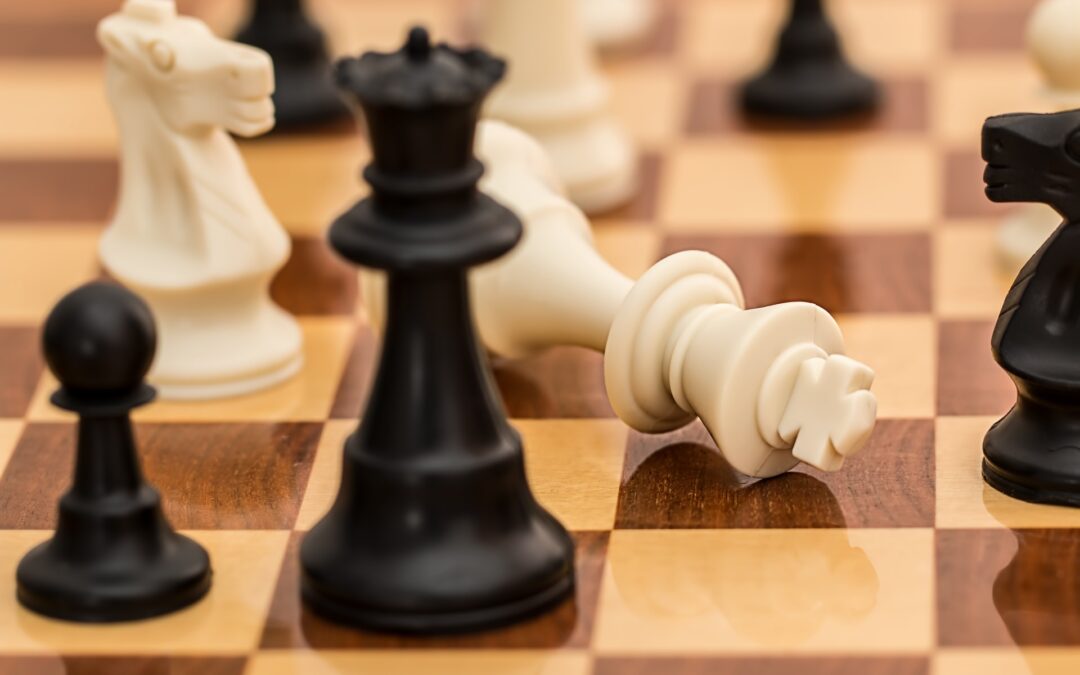This is the ultimate guide to winning any escape room challenge.
Wondering how to beat even any escape room like a pro?

Having played numerous escape rooms ourselves, and observed multiple teams…
Some of whom sailed through, many of whom had to fight hard to make it out, and some of whom failed…
In action at our escape room, we have zeroed in on certain strategies you can follow to tackle escape rooms like an expert.
Beating any escape room like a pro

As we shall see, winning an escape room challenge doesn’t start when you step inside the escape room.
It starts when you’re planning your escape room adventure, and picking your team.
- Assembling your team
- Play with people that you REALLY know
- Pick a suitable group size
- Arriving at the escape room
- Plan ahead
- Wear a watch
- Preparing for the game
- Listen to the game master/into video for the game briefing
- Ask useful questions to the game master
- Inside the escape game
- Reflect on the briefing
- Pinpoint game objectives
- Search everywhere (except where you’ve been TOLD not to)
- Have a system for stashing clues and objects
- Communicate, and collaborate!
- Don’t be afraid or averse to ask for help
- Stay alert
Assembling your team

As we know, escape room challenges are meant to be shared, group activities. The better your teamwork, the higher your chances of beating the escape game.
Here are a few things to consider when assembling your escape room team.
Play with people that you REALLY know
There’s all the people on your Facebook friends list. And then there are the people that you really know.
Inside the escape room, you need to work out quickly which person should do which puzzle/task.
- Someone who jumps at the slightest noise is not the best person to for a task that needs them to hold something steady.
- On the other hand, that same someone might have the best eye to detect patterns in a medley of colours.
This is not something that you can make out inside the escape room by asking your team members what they’re good/not good at.
You have to know these instinctively…which is why you should prefer people you know really well for your team.
Pick a suitable group size

With teamwork being so important, you know trying an escape room with 2-3 people is not going to work – that’s just too few minds to deliver the value of collaborative teamwork.
On the other hand, having too many players – stretching your team to the maximum room capacity – might simply lead to players stepping on each other’s toes rather than working together.
Pro tip: Try to go for a team size that’s 50% of the room capacity plus one or two players. So, if a room can accommodate at most 6 players, ideally you should try it with 3-5 players.
Arriving at the escape room
You want to be really fresh and alert when you arrive at the escape room. And you should have some time to compose yourself before you begin your game.
Plan ahead
Energy spent for your group to get together (if you’re arriving from different places) or time spent chasing parking spots can be a real drag on your escape game.
Pro tip: Arrange for everyone in the group to meet at your house…or a well-known location near the escape room (if people are coming in from different places).
Pro tip: Plan to arrive at the escape room 15-20 minutes before your time slot.
Wear a watch

Most escape rooms will allow you to wear a watch inside the room. A wristwatch may be more convenient to keep track of time than the escape room’s clock.
Just make sure the watch isn’t too fancy, otherwise it might not be allowed inside the room.
Preparing for the game
Some players think it’s macho to ignore the pre-game briefing, and believe they can jump straight into spotting clues and cracking puzzles.
By the time they realize their mistake, it’s too late…
Listen to the game master/into video for the game briefing
The theme and backstory of an escape room are not window dressing. They can include valuable information telling you how to get started, or get out of a hole.
So, listen carefully to the game master/intro video when they are delivering the game briefing to you.
If you get tempted to ignore it, or listen half-heartedly while simultaneously glancing around the room, resist. Keep your focus on the briefing, and take mental notes.
Ask useful questions to the game master
Some such questions would be:
- How do hints work (i.e. how many can you ask, do you lose time for asking, etc)?
- Is the game linear or non-linear?
- Can the same game piece be of use more than once?
- Does the game contain false leads/red herrings?
Inside the escape game
Once you’re inside the escape game, and the countdown begins, keep calm, recollect what you know, and look for how to proceed.
Here are a few strategies to follow inside the escape game.
Reflect on the briefing
Take a few moments to collectively think about the briefing. Just ask every player to recount their recollection of the briefing.
You never know, someone might have noticed a clue or a hint the other missed.
Ideally, this should take less than a minute.
Pinpoint game objectives

This will tell you what you need to look for.
For example, if the door to the next room has a numbered lock, the point of the current room would be to find a numerical code.
If there’s a chest with a padlock in plain sight, it could very well be the starting point…and you’d need to find a key.
Search everywhere (except where you’ve been TOLD not to)
Here’s the deal:
Barring instructions given by the game master (like “There’s nothing hidden in the lights”), and “Do not touch” labels,
The entire game room is open to a search.
From under the rug to the books on the bookshelf, look everywhere for hidden clues.
Have a system for stashing clues and objects
It’s entirely possible you find a clue much before it comes into use in the game.
It’s also possible you have found THE game object your team mate needs to crack the puzzle they’re working on.
And finally, you might have to carry clues and objects from one room to another.
So, have a central, open place to keep all your findings.
Communicate, and collaborate!

I’m sure you’re tired of hearing this, but we see players fail to do these every day…so we’re going to repeat it.
Whatever you see, hear and/or feel, tell everyone about it.
Whatever you’re thinking, whether it’s a potential clue from the intro video or a different way something could be opened, tell everyone about it.
If someone’s having trouble dealing with a clue, talk it over with them.
You might even face a situation where a chart reveals the way to arrange cards, but the two are in different rooms.
As you can guess, this is a two-man job – someone will have to read out from the chart while the other person arranges the cards.
Don’t be afraid or averse to ask for help
Many teams take it as a point of pride that they won’t ask for help.
Don’t do that.
From a personal level, as escape room enthusiasts ourselves, we want you to win. And we’ll be happy to point you in the right direction, or to help you understand how to deal with a puzzle.
On the other hand, we feel disappointed when a team refuses to ask for help until it’s too late.
Insight: Game masters undergo hours of training to understand how a team is doing, and when some help would be useful. We do this to help you have a great experience.
So, don’t be embarrassed to ask for help, and if the game master suggests you take a hint, go ahead and say “Yes”.
Stay alert

As the game rolls on and the clock ticks down, it’s natural for fatigue and frustration to set in.
Don’t let them overwhelm you. Stay focused on finishing the game.
Remember, your sucess could hinge on you noticing spelling errors in a piece of text or finding a certain way of holding a mirror.
You won’t be helping yourself by letting attention droop or expending energy in voicing frustration rather than spotting solutions.
Fight fatigue, resist frustration and remain focused.
That’s how you can beat escape rooms like a pro.
Note: Yes, I did mis-spell “success” in this section. If you spotted it, well done!
Putting our strategies to the test

We’ve claimed that all of these are strategies that we’ve developed by playing escape rooms, being involved in designing escape games, and observing teams in action at our escape room.
But you know what they say – the proof of the pudding is in the eating.
So Google “escape room near me”, book a room you like, and put our strategies to the test!
Featured image by Steve Buissinne from Pixabay.






